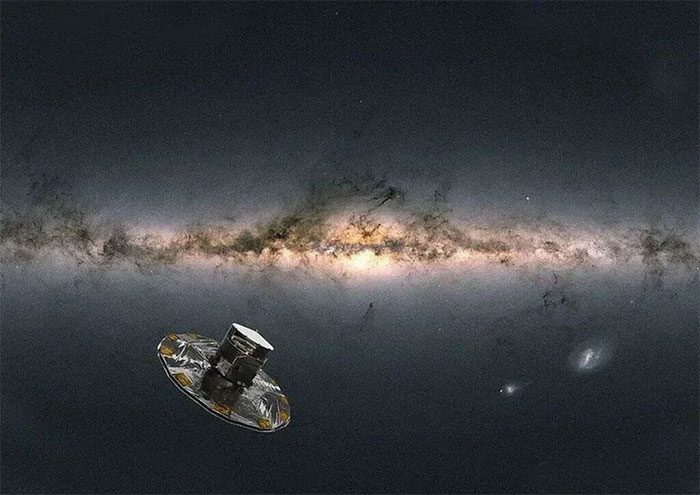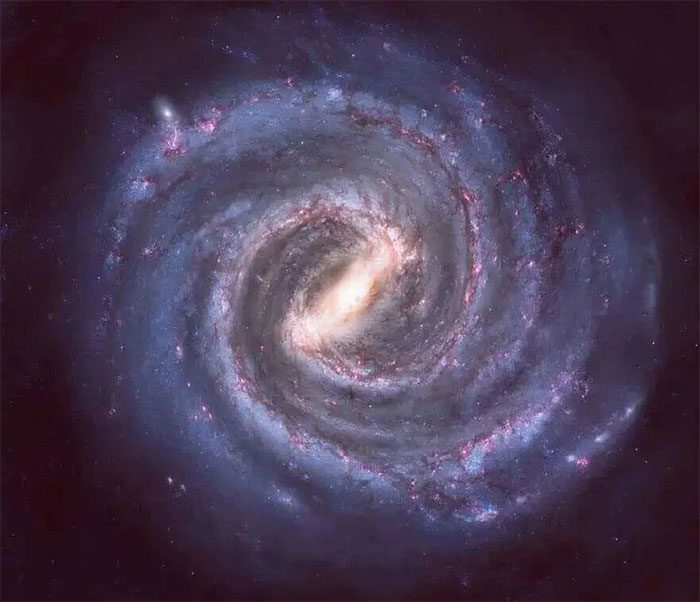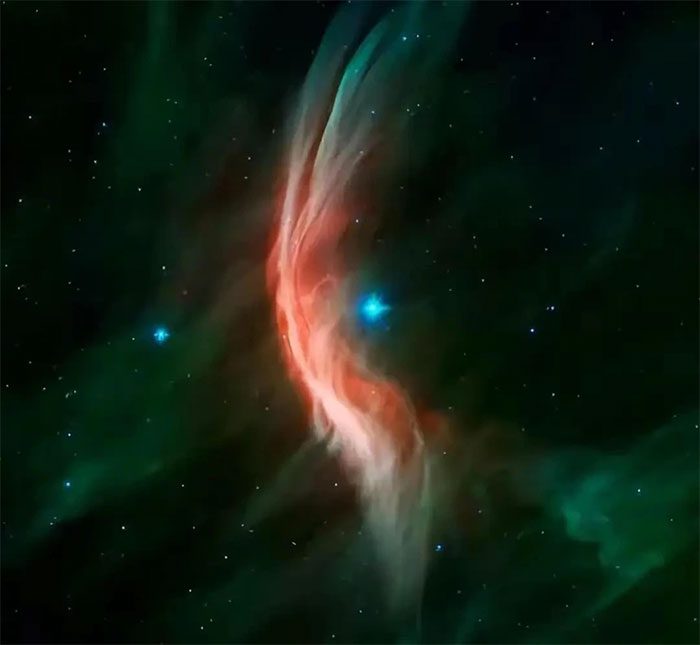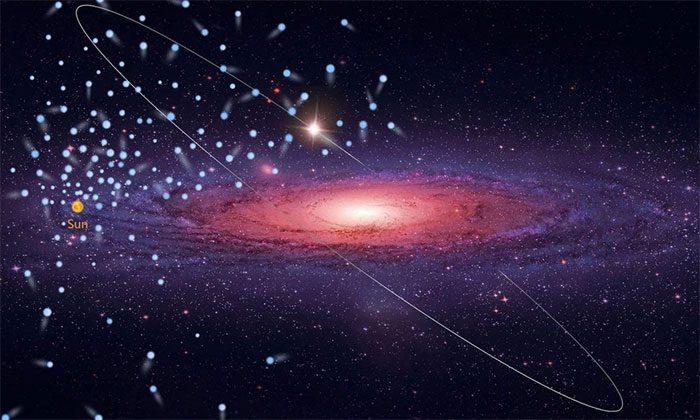The Milky Way can have a diameter of up to 200,000 light-years and has a shape resembling a flat disk, with a bulge in the center known as the “galactic core.”
All the stars and other celestial objects in the Milky Way orbit around its center, where the center of mass is located, home to a supermassive black hole with a mass approximately 4 million times that of the Sun. The stellar density at the center of the Milky Way is also extremely high. Our Solar System resides in one of the spiral arms of the Milky Way, about 26,000 light-years away from the galactic center.
As long as the speed is fast enough and the trajectory is precise, Earth could escape the Sun’s gravitational pull and become a rogue planet. Similarly, if a star has a high enough escape velocity, it can break free from the galaxy’s gravitational grip and become a wandering star until it is captured by another galaxy or celestial object.

In about four billion years, the Milky Way will collide with its nearest neighbor, the Andromeda Galaxy. The two spiral galaxies are currently hurtling toward each other at a speed of 250,000 miles per hour. When they collide, it will not be as catastrophic as one might imagine—Earth is likely to survive, and very few stars will actually be destroyed. Instead, the new supergalaxy formed will bring a night sky filled with a spectacular combination of stars and light unlike anything we see today.
Taking the Milky Way as a reference frame and not considering the Sun’s rotation speed, scientists estimate that at the location of our Solar System, the minimum speed required for an object to escape the gravitational bounds of the Milky Way is approximately 320 km/s.
Since 2005, scientists have discovered several stars moving at extremely high speeds within the Milky Way, with speeds that can exceed 1,000 km/s, and some stars potentially surpassing 2,000 km/s, far exceeding the current escape velocity of the Milky Way. According to scientists’ predictions, barring any unexpected events, these stars are expected to escape the Milky Way in the future.
The Gaia spacecraft is a space probe launched by the European Space Agency (ESA) in 2013. Its main mission is to map the positions and orbital movements of over one billion stars in the Milky Way. It can measure the positions and motions of stars, their brightness and colors, and can also analyze the spectra of stars to determine their chemical composition and motion speeds.

We really do not know exactly how many stars are in our galaxy. Many of them are faint, low-mass stars that are difficult to detect at vast cosmic distances. Astronomers have estimated the total number of stars based on the mass and brightness of the Milky Way, but capturing the exact figure remains challenging.
A research group of astronomers from the University of Barcelona in Spain stated in a paper that based on the motion parameters of stars obtained by the Gaia detector, they have tracked and studied a group of 1,752 stars of spectral types O and Be. These are all massive stars, and researchers have found that there are likely more stars escaping the Milky Way than previously thought, estimating up to 10 million stars.
The number of stars in the Milky Way could reach 400 billion, so if there are indeed 10 million stars escaping the Milky Way, this is not a small number.

The Milky Way is also surrounded by over 150 ancient star clusters, some of which are among the oldest star groups in the universe.
Regarding the origin of the extremely high speeds of these stars, astronomers have proposed several possibilities, with two hypotheses being highly recognized.
One is called the “dynamical ejection theory.” This theory suggests that dynamical ejection is more likely to occur in dense young star clusters containing a large number of massive stars. When stars come close enough, the complex gravitational interactions between multiple stars can cause one or more stars to be ejected, and these ejected stars can achieve extremely high speeds.

Scientists have yet to determine the reasons these stars achieve such high speeds. (Illustrative image)
The other is called the “binary supernova theory.” This theory posits that in a binary or multiple star system, if one star undergoes a supernova explosion, the strong radiation pressure and the material shockwaves it generates can impart significant kinetic energy to the other stars in the binary or multiple star system, pushing them out of the system.
However, scientists have not yet determined the exact reasons for these stars achieving such high speeds or whether it is due to a combination of factors and the proportions of different influences.


















































